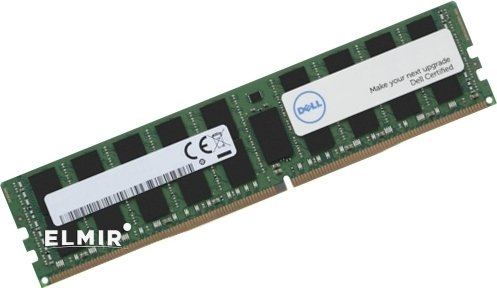Contents:


Accountancy Procedures implemented by businesses affect Ratio Analysis significantly. A business may include an Exceptional Income (Non-Recurring Income) in its revenue. The turnover of receivables reflects how fast net sales are converted into cash. This ratio may reveal how effectively the business manages its supplies.
- We may explore several methods used to assess the data in a balance sheet now that we have a better knowledge of what a balance sheet is and how it is made.
- From the profitability point of view and return on equity and return on assets point of view, IOCL is a better choice than BPCL.
- For instance, they may assume that a company has a high ratio as it hoards cash instead of paying dividends to its shareholders or seldom reinvests in the business.
- Quick ratio and current ratio have only one thing in common; they are used to compare assets compared to the current liabilities of a company.
- When used single-handedly, this ratio does not prove efficient to measure the liquidity of a particular firm accurately.
Conversion of debentures into preference shares will decrease the debt component and increase the equity component, which in turn will decrease the debt-equity ratio. The operating ratio is used to measure the operational efficiency of the management. Measures a company’s ability to pay short-term obligations or those due within one year. The debt-to-equity ratio (D/E ratio) shows how much debt a company has compared to its assets.
Businesses intentionally abuse the subjectivity of accounting by selecting such accounting policies, which tend to skew the numbers in the way preferred by management. The fact that ratio analysis gives a comprehensive picture of the company’s health, financial stability, and valuation is its first benefit. It aids in decision-making for management, investors, and lenders. It is a crucial technique for financial statement analysis and is adaptable to the requirements of the user. Ratios provide granular information about each business division. The payable Accounts payable turnover ratio is a short-term liquidity indicator that reveals how frequently a business settles its accounts payable over the course of a period.
These two ratio analysis types are debt-to-equity ratio and interest coverage ratio. The key ratio analysis types are debt-to-equity, price-to-book, price-to-sales, and price-to-earnings can aid investors in determining a stock’s real worth. Calculating a stock’s worth can be as easy or as difficult as you like. The company’s short-term liquidity situation is assessed using current ratios. These ratios aid in determining whether the company can fulfil its immediate responsibilities.
Importance of Liquid Assets
Hence Liquid Finances are the perfect investment option for retail investors. Operation Freights When you invest in Bank deposits, you don’t have any pay any fund operation freights. But in a Liquid fund, your fund director manages your portfolio and charges a fund operation freights. Accrued income is such an amount of money that has already been earned but yet not received. Interest earned on investment that has not been received is an example of accrued income.
Plus get personalized analysis, doubt solving and improvement plans to achieve a great score in Commerce.
Current Liabilities are the obligations and debts of a company that they have to pay off within a year. Generally, these are assets that can be converted into cash within the next 12 months or an operating cycle, such as inventory and accounts receivable. A corporation that expands its market share will also expand its revenues more quickly than its competitors. This ratio is relatively easy to manipulate; hence does not provide an accurate picture to investors or stockholders. Often fails to gauge the financial health of a firm accurately as it does not account for the frequency of sales or obsolete produce.
Analysing the balance sheet?
Quick ratio factors in just the high liquid assets like cash while the current ratio factors in all the current assets of a company. That is, the current ratio includes inventory which is not a highly liquid asset. This is why the quick ratio and current ratio are different metrics that are used in different circumstances and to get insights into different aspects of the business. The quick ratio is a liquidity ratio that measures a company’s ability to meet its short-term obligations with its most liquid assets. It is calculated by dividing quick assets by current liabilities.

Our Goods & Services Tax course includes tutorial videos, guides and expert assistance to help you in mastering Goods and Services Tax. Clear can also help you in getting your business registered for Goods & Services Tax Law. In this example, the quick assets calculation was simple because all the assets were quick assets.
Components of quick ratio formula
For our analysis, we have chosen one upstream company Indian Oil Corporation Ltd and one downstream company Bharat Petroleum Corporation Limited . We have chosen these two companies based on their market capitalization as IOCL has 1.27T rs. of market cap versus 1.11T rs. of BPCL. Account receivables pertain to such proceeds or payment that the customers of a company will have to pay for purchasing services or goods on credit. Net Profit ₹40,000; Office Expenses ₹20,000; Selling Expenses ₹36,000; Total revenue from operations ₹6,00,000. EPS shows the rate of earnings per share of common stock.
- To assess a company’s valuation, rates of return, profitability, development, margins, leverage, liquidity, and other factors, you can use the ratios from its financial records.
- A company buys assets (factories, equipment, etc.) to conduct its business.
- Calculating a stock’s worth can be as easy or as difficult as you like.
- The material and information contained herein is for general information purposes only.
The average age of inventory is viewed as the average length of time inventory is held by the firm or as the average number of day’s sales in inventory. Thus, the payback period method is advised for the evaluation of investment opportunities in the situation of an overleveraged business. The payback period refers to the amount of time it takes to recover the cost of an investment or how long it takes for an investor to reach breakeven.
Answer Answer: A
It is significant to keep in mind that certain quick ratio is equal to quick assets divided by whats will require data from more than one financial statement, such as the balance sheet and the income statement. Quick ratio is also known as the acid test ratio and it provides insight into how prepared a business is to convert its liquid assets in case of an emergency or immediate expenses. Quick ratio shows you how well you are covered for the time you have sudden cash flow issues in the short-term. Quick ratio is often used along with operating cash ratio and current ratio rather than in isolation. The total asset turnover ratio is the efficiency of the use of total assets in generating sales.
Short-Term Assets: Overview, Benefits and Examples – Investopedia
Short-Term Assets: Overview, Benefits and Examples.
Posted: Sat, 25 Mar 2017 18:43:38 GMT [source]
It indicates the financial health of a company and how it can maximize the liquidity of its current assets to settle debt and payables. A liquidity ratio is a type of financial ratio used to determine a company’s ability to pay its short-term debt obligations. This ratio compares a company’s current assets to its current liabilities, testing whether it sustainably balances assets, financing, and liabilities. Quick ratio can be used by anyone but it is of high importance to investors and lenders. Investors want to know that the business they are investing in has the ability to meet sudden emergencies when they arise. This is why they use the quick ratio to ensure the company can be trusted.
Preferred dividends are deducted from net income to get the earnings available to common stockholders. Also known as “receivable turnover in days”, “collection period”. It measures the average number of days it takes a company to collect a receivable.
Strategies & Customer Satisfaction
The effect of the accounting policies used by the company in recognising income and expenses is not taken into account by ratio analysis. Ratio Analysis will produce a biased comparison between the businesses that do not reflect a true comparison between the companies. A valuation metric called the PEG ratio is used to evaluate the relative trade-off between a company’s expected growth, stock price, and profits per share. It is easier to compare high-growth firms, which typically have a lower P/E ratio, with mature businesses, which typically have a higher P/E ratio.
The short-term investment securities are known as cash equivalents with maturity periods to be usually around 90 days or less. Examples of cash equivalent include Treasury bills, legal tender, cheques that are received but not deposited etc. A high inventory turnover may be caused by a low level of inventory which may result in frequent stockouts and loss of sales and customer goodwill. Higher the ratio more secures the debenture holders and other lenders would be with respect to their periodical interest income.
Return on Assets (ROA): Formula and ‘Good’ ROA Defined – Investopedia
Return on Assets (ROA): Formula and ‘Good’ ROA Defined.
Posted: Sat, 25 Mar 2017 23:32:52 GMT [source]
Before that one should know the Ratio analysis types because it is an important aspect of Ratio Analysis. Now Ratio analysis is the study or analysis of the line items found in the company’s financial records. It can be used to evaluate a number of aspects of a business, including revenue, liquidity, solvency, and operational effectiveness. Ratio analysis types make use of balance sheet values, which represent the company’s situation as of a specific date. The majority of these values are displayed on the income statement and historical cost, respectively, which show the results for the entire year at the current price.
If wrongly used ratios may create havoc and financial crisis in the company or business houses. Very much care is needed in applying ratios to different purposes especially in bigger investments, lending decisions from banks, fore warning of sickness of the company etc. Analysis of financial ratios like ROE tells you how good a company is at rewarding its shareholders for their investment. This is one of the most important ratios from the investor’s point of view. The debt ratio indicates the proportion of assets financed by both short-term and long- term debt.
The return on equity measures the return earned on the capital provided by the stockholders. Here the average common equity is a simple average of the common equity at the beginning, ending balance sheets. The net income is the income available for distribution to ordinary shareholders less preferred dividends.
Edu4Sure is a bootstrapped venture with 1200+ Trainers, 70+ Colleges & 30+ Corporate. One of the most appreciated Training & Certification companies. You may Enroll for Self-paced (Pre-recorded) or 1 to 1 Personal Training. The Return on assets employed has increased significantly for IOCL from 12.44% to 27.65% . It means that the company is employing the assets in a better way. As you can see, the advantages of Liquid Finances far overweigh the disadvantages.
It’s a ratio that tells one’s ability to pay off its debt as and when they become due. In other words, we can say this ratio tells how quickly a company can convert its current assets into cash so that it can pay off its liability on a timely basis. Generally, Liquidity and short-term solvency are used together. Current liabilities are those which are due to be paid within an operating cycle or within a year. The operating cycle or cash conversion cycle refers to the time taken by businesses to convert inventory to goods that they can sell.
In order to interpret a company’s results quantitatively, balance sheet ratios are used to compare two items on the balance sheet or analyze balance sheet items. It explains how the company could survive if all its obligations are paid. The quick ratio is the sum of a company’s current cash, securities, assets and accounts receivables divided by its current liabilities. You can also calculate it as the company’s current assets, less inventory and prepaid expenses, divided by its current liabilities.

Recent Comments